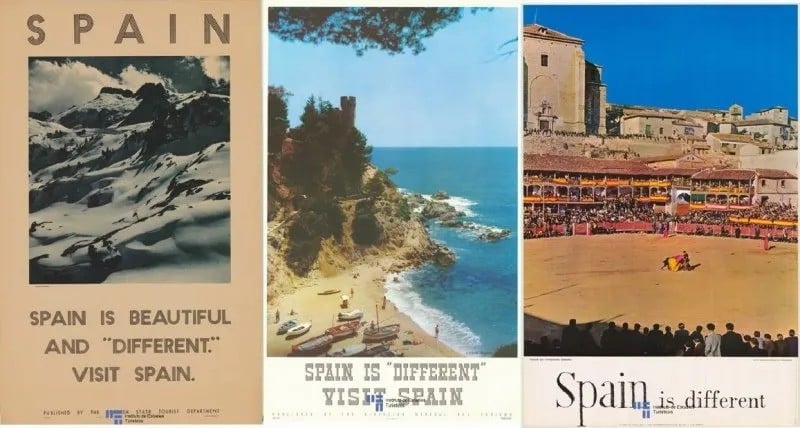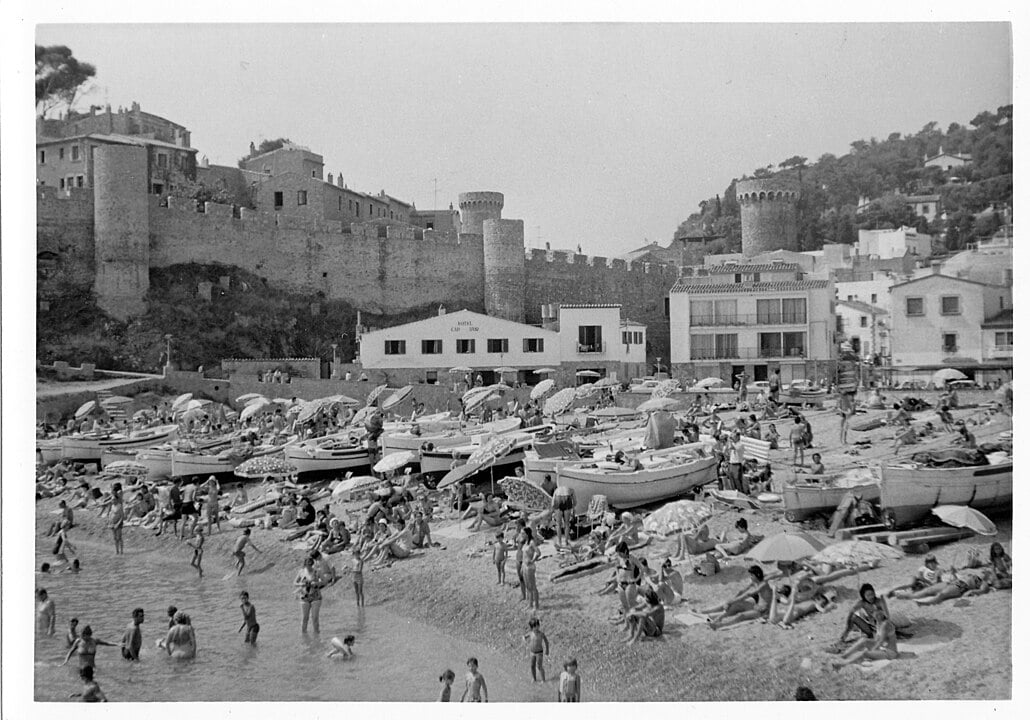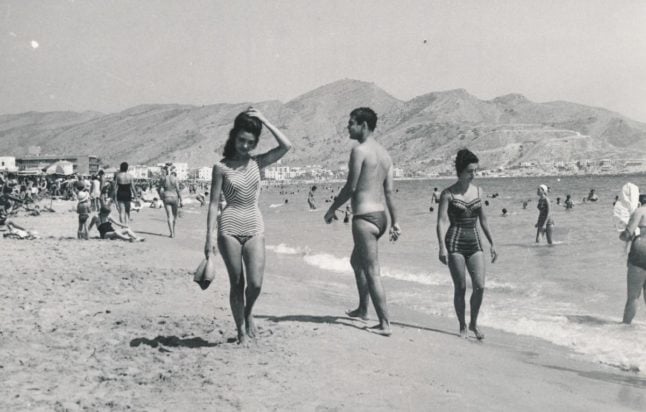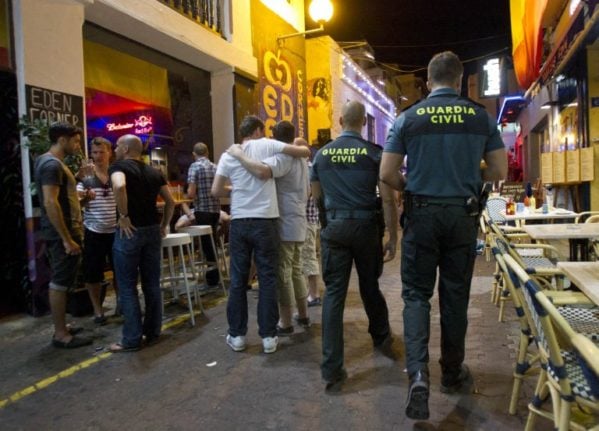Tourism in Spain began in earnest around the end of the 19th century, starting off as a spa and wellbeing destination for wealthy but sickly foreigners during the cold winter months, whose doctors recommended sunny weather and cold water for recovery from their ailments.
Spain’s Civil War brought the industry’s development grinding to a halt. Once in power, Franco’s regime initially closed itself off to the world and attempted to become self-sufficient, but it didn’t have enough industrial clout to keep afloat.
As a result, cash-strapped Francoist Spain completely changed its strategy in the late 50s and early 60s. The dictatorship liberalised the economy and invested heavily in promoting tourism abroad as a means of whitewashing the regime, turning its back on the Catholic, traditionalist sector of society which shunned the idea of free-thinking northern European tourists gracing Spain’s beaches in bikinis.
For Franco, “if foreign tourists from other nations arrived, they were tacitly accepting the regime,” University of Granada researcher Nicolás Torres, author of “Franco’s touristification of Spanish heritage”, explains in his book.
READ ALSO: Why Spain is still in the wrong time zone because of Hitler
The regime opened its borders without checks or visa requirements, the peseta was deliberately devalued to make it cheaper for foreigners to spend their holidays in Spain, and legislation fixed the price hotels and restaurants could charge in order to keep them low, all factors that planted the seeds for the ‘anything goes’ tourism model.

In fact, two of the popular tourism slogans of the time were Pase sin llamar (‘Come in without knocking’) and ‘Spain is different’, written in English.
From 1960 to 1970, the number of international tourists quadrupled from 6.1 million to 24.1 million.
It was during this time that Spain’s coastal building bonanza kicked off, often without the correct permits, as well as an ample dose of nepotism and bribes.
Mayors were also given financial incentives, above and below board by both government and private investors, if they agreed to turn their villages and towns into well-maintained tourist hotspots.
This transformed sparsely developed villages such as Benidorm into a high-rise megalopolis, bringing jobs and new opportunities to once fishermen and farmers. Such sped-up urbanisation was often disorganised and brutalist, something present in many of these coastal towns to this day.

“Mass tourism linked to the ‘sun and beach’ concept allowed the construction of second homes and hotels near the coast. If the future – our present – had been taken into account, perhaps we would not have the current situation now,” Torres concludes.
By the 1970s much of Spain’s islands, eastern and southern coastlines were well equipped to welcome an ever-larger number of northern holidaymakers.
However, the country’s tourism earnings weren’t increasing, given the regime’s price fixing and that tour operators such as Thomas Cook and Thomson kept much of the profits and their all-inclusive model didn’t encourage Brits and others to spend money outside of their hotels.
With Franco gone and the country’s first democratic elections in 1977, higher-earning freedom-seeking Spaniards started to go on their own holidays themselves.
READ ALSO: The row brewing in Spain over whether Franco’s regime was a dictatorship
The tourism industry continued to grow, this time in theory with a bit more regulation, including the 1988 Coastal Law which banned building too close to the coast.
The 1982 World Cup, the 1992 Barcelona Olympics and even the Seville Expo that year all added to the popularity of the Spain brand, but Marca España still couldn’t shake off its reputation as a cheap, sunny and all-permissive holiday destination.

It was around this time that ‘hooligan tourism’ began to develop, as historians Tomeu Canyelles and Gabriel Vivesbehind, who wrote the book “The violent years: the origin of hooliganism in Magaluf” described it.
Excessive drinking, vandalism and fighting became a daily occurrence in towns that catered to the young, working-class British holidaymaker – a new type of tourist – and one that has become intrinsically associated with Spain ever since.
According to archive articles the historians have unearthed, there were already calls in the 80s for a tourism model that wasn’t based on booze tourism, but businesses in Magaluf, Salou, Lloret de Mar among other coastal towns continue thirty years on to aggressively market cheap alcohol as the main draw of the holiday.
Whereas France and Italy have been able to stave off this kind of holidaymaker, the only other European examples of drinking and partying holiday destinations are in the Greek Islands and Cyprus.
Spain’s tourism behemoth is now multifaceted and with different price tags, but of the 84 million visitors who came in 2023, a huge proportion are still after just the cheap price tag and sunny weather.
Overhauling a tourism model which last year accounted for 12.8 percent of Spain’s GDP and 20 percent of the workforce (including hospitality workers) is no easy task, but with el turismo now having a bigger impact than ever on living costs, quality of life and access to housing for Spaniards, the need to uproot the ‘cheap mass tourism’ seeds planted by Francoist Spain seems urgent.
READ MORE: Why does hatred of tourists in Spain appear to be on the rise?



 Please whitelist us to continue reading.
Please whitelist us to continue reading.
Member comments